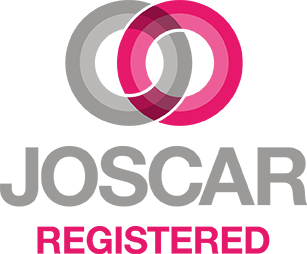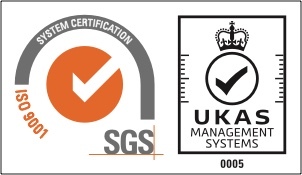
Many organisations seek to iron out process roadblocks through change management; but it is often ad hoc, short sighted, and doesn’t always align with a company’s mission
Working in the ever-changing environment, managers quite often find that change has been mismanaged, simply because many companies forget that any improvement made to a process immediately triggers a change process.
“Continuous improvement is better than delayed perfection” Mark Twain.
There are a variety of improvement methodologies, tools and techniques available to any team but in order to gain the most from them, the selected approach needs to be correctly applied and efficiently managed. The impact on customers and suppliers also needs to be managed during the change period.
In this blog, you will learn about:
- The relationship between change management and continuous improvement
- How to make ‘change management’ inclusive, rather than divisive
- The advantages of adopting a culture of continuous business improvement
- How you can train your employees in ‘change processes’ and business improvement techniques
Continuous Improvement is essentially about continually improving your business, processes, and ways of working. For example, in the context of Lean Management, continuous improvement seeks to improve every process in your company by focusing on enhancing the activities that generate the most value for your customer while removing as many waste activities as possible.
The successful management of change is more than just knowing what tools and techniques to use. Softer skills such as understanding why people will resist change and how to help them, and ourselves, through the Change Curve are important, as is how to involve staff in the change process, how and when to communicate change and how to support team members throughout the process.
The Relationship between Change Management and Continuous Improvement
Most change methods agree that change is difficult and cumbersome. To master or thrive on change, it is important to embrace perpetual growth and development, continuous learning, and constant improvement. Change needs to be planned and controlled so that it does not result in confusion and chaos.
“Do the best you can until you know better. Then when you know better, do better” Maya Angelou.
Continuous improvement organisations exist to drive change. Real change management is tangible, quantifiable and critical to driving a sustainable adoption.
Continuous improvement is an ongoing, long-term approach to improve processes, products and services. In contrast to change management, continuous improvement occurs gradually and aims to make small incremental changes over time. However it is important to note that continuous improvement projects can also become part of a larger change management initiative.
The real success of an improvement initiative comes when continuous improvement becomes business as usual. As this is an ongoing and constantly evolving process, it is important to keep re-visiting the changes you have made to see if they can be improved further or if there are any factors that might have an impact on the changes you have made in the long-term.
Linking continuous process improvement to business performance is one of the greatest challenges faced by the organisation. Without this linkage, continuous improvement is scatter-shot at best and random at worst. It is fundamental that all employees are engaged in Continuous Improvement in order for it to be successful. This means that there needs to be a big emphasis on employee engagement with business processes and an appetite for a process driven culture at all levels of the organisation, from the top leadership down.
Continuous Improvement requires a systemic dissatisfaction with the status quo, no matter how good the organisation is perceived to be. There needs to be a collective understanding that standing still will allow the competition to overtake.
Steps in implementing change: engaging your employees throughout
An important factor in successful continuous improvement is changing the underlying culture of an organisation. Culture is how an organisation classifies, communicates and acts in a given situation. Therefore, effective cultural change is the result of changed norms and beliefs of individuals reinforced by actions supporting the desired change
As organisational change management strategies typically look at the people within the organisation, most of the key steps of managing change should be focused on them. Involving people early on and during implementation, plus continuously adjusting for improvement is critical to success. This includes thorough planning, buy-in, process, resources, communication, and constant evaluation.
Here are the key points to consider when implementing change in your organisation:
1.Ownership – Making sure that you have ownership for a project at a senior executive level. Without this, it is very unlikely that your project will get off the ground
2.Buy-In –You must make sure that you have buy-in, not only from your senior stakeholders, but also from the people who will be directly affected by the proposed changes
3.Involvement – Getting the right people involved from the very start is key to the success of your change management, ensuring that everything runs smoothly and the impact on the business remains relatively low
4.Impact – Before you begin implementing changes you will need to consider the impact that they will have on the people in your business
5.Communication – Communication is king, and you must make sure that the people who are directly affected by the changes are kept informed throughout the process
6.Readiness – Once changes have been proposed, the people in your business will need to be ready to accept and implement them. This could be through training or raising awareness of your change project
The advantages of developing a culture of continuous improvement
Creating a culture of continuous improvement will not only help make your products better, it will make your teams and your business better as a whole. Organisations dedicated to continuous improvement recognise the importance of related actions for strengthening the quality of a product, improving customer satisfaction, and for improving efficiency, productivity and profits.
Organisations that excel at continuous improvement incorporate it into their values and reflect it in their hiring and training. They also incorporate it in their employee evaluation and compensation systems.
The direct benefits of continuous improvements are often easy to predict. You can calculate or estimate cost and time savings even before you implement the changes. There are other significant benefits:
Better Acceptance of Change and New Ideas: When your organisation is used to accepting the status quo, new projects and opportunities can be seen in a negative light. With a continuous improvement strategy deployed, your teams will get used to and appreciate working with the notion that change is positive
Better Morale: Your collaborators and employees will benefit from the improvements and increased dynamism that continuous improvement provides. Continuous improvement projects are an opportunity for employees to step outside the box and have a meaningful and rewarding impact on their job
Increased Motivation: When those you work with know they are empowered to observe, analyse and improve the way they work, they’re more motivated than if they’re expected to simply apply the same old methods and ways of working. They’ll be more excited about their career future when they know they can have a positive impact on it
GBS can help you manage change thorough continuous improvement
You will require the right tools and skills to achieve success in continuous improvement, and to keep it going. That is why Quality professionals are in high demand and why more employers are now demanding Chartered Quality Professionals to work within their teams to lead their continuous improvement plans.
The Quality profession attracts highly skilled practitioners who work to improve upon all of the elements within their organisation. They are champions of finding better, more refined ways of working, and innovating processes so they reach their full efficiency.
The GBS PT204 – Managing Change and Continual Improvement course has been designed to equip Managers, Team Leaders and Improvement Leads with the practical skills, tools, and structured techniques to manage change in the context of process management and improvement. This 3-day course is highly interactive enabling attendees to immediately apply what they have learnt across different business scenarios. Completion of two Practitioner level CQI Quality courses, together with demonstrable work experience, can lead to the gold standard Chartered Quality Professional (CQP) status, which is recognised alongside other roles with Chartered status.
The key to success is having Managers and Leaders who are trained in managing your change plan, communicating and engaging with employees throughout and working with their teams to deploy an integrated approach to continuous improvement.
They can learn all this by taking part in training provided by GBS.






